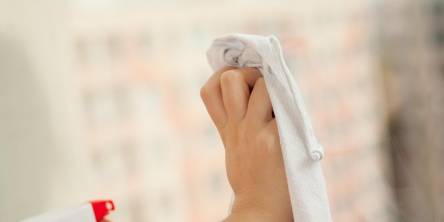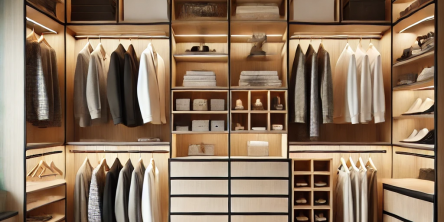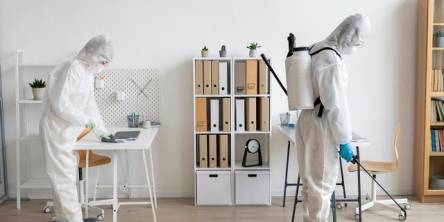Everything You Need to Know About Engineered Hardwood Floors

Engineered hardwood is an improvement of natural hardwood. The features are enhanced through laminate construction. This refers to the use of several layers of wood planks that are glued together and treated under extreme pressure and heat. This results in tiles that are stronger than what you would get with natural wood. These planks are also rigid and light in weight.
Typical engineered hardwood comes in three layers, with the core being a high-density fiberboard. At the bottom is hardwood that is expertly treated to make it moisture resistant. A veneer top layer is also included, made of real hardwood to give your floor the classic wooden feel. This is the layer that allows sanding or refinishing once or twice whenever your floor wears out. This process allows you to re-engineer the floor and renew its appearance.
Variety of styles and textures
Like natural wood, engineered hardwood comes in a variety of designs and styles. The colors and finishes depending on the wood species, with manufacturers offering incredible choices to their clients. There are incredible domestic choices that include oak, maple, cherry, and walnut, among others that are unique and therefore less common. There are other options that are used to spice your floor by giving it an exotic feel. They include acacia, sapele, and tigerwood, among others.
Pre-finishing using polyurethane-UV is common for most hardwoods. You may also get woods that are finished with aluminum oxide, which gives the surface a longer lifespan and makes it tougher. However, this kind of finishing may bring a problem in future when you need to renew the floor. Not many technicians can handle the aluminum oxide coating during refinishing. A contractor who does not understand this finishing will damage the floor during renewal.
Installation of Engineered Hardwood
Engineered wood can be installed using either nails or glue. This is similar to what you get with natural wood. These installation procedures are facilitated by the design of edges and end such that they snap together, eliminating the need for nailing. You require a foam cushion underlayment over which you snap your tiles in place using the DIY guide that is usually provided. Engineered wood can be installed on practically all floor types, except thick carpets. With an easy DIY installation procedure, you will save a lot in labor costs without compromising on the quality of your floor.
According to some manufacturers, the engineered hardwood tiles can be installed in areas with high moisture because they are resistant. However, the engineering does not achieve 100% moisture resistance. This means that the planks will succumb to water when installed in areas with high moisture content like the bathroom or kitchen. The label of ‘moisture resistant’ is not a reason to do a poor quality drying job below the surface. The sub-surface must be dried completely and protected from water coming from underground or any other seasonal flooding. Small amounts of water over time will lead to complete damage.
Maintenance of Engineered Hardwood Floors
The integrity, as well as natural appearance of engineered hardwood floor, is preserved through ordinary maintenance procedures. There are steps recommended by manufacturers and experts that will keep your floor looking divine. Proper care and maintenance will also prolong the life of your floor. Here are maintenance tips to consider in order to maintain an impressive floor that delivers long-term value for money.
Keep a mat at the door
This is a common practice for floors whose surface can be scratched by stone pebbles and debris. The mat collects the debris from shoes and feet, ensuring that it does not end up on the surface. Stones and other coarse materials will scratch the surface, causing damage and leaving it coarse. This means that your two refinishing procedures will be carried out too soon, reducing the lifespan of your floor.
Vacuum the floor twice in a week
Sweep and vacuum the floor twice or three times in a week. However, this will depend on the nature of activities taking place on your floor. Vacuuming is aimed at removing the dirt and grit that may have settled on the surface. Allowing it to remain leaves the floor open to scratches as people walk on it and other activities take place.
Wipe Spills immediately
Spills should be wiped immediately. Engineered hardwood is highly resistant to staining. However, some stains are stubborn and will damage your floor when left to linger for too long. When stains are old, their removal is difficult, raising the possibility of damaging the floor in an attempt to remove it.
Mop the surface with a soft-dump rag
Mop the surface with a soft-dump rag regularly. Use recommended mild floor cleaning substances alongside soap and water. Ascertain that the substances are labeled for use on hardwood flooring. Ensure that the mop does not leave wet spots or fluff on the surface.
Monitor the activities of children and pets
Monitor the activities of children and pets on your floor. They are the most likely parties that can damage the floor by scratching. Keep the nails of pets well trimmed. Children should not be allowed to play with rough or sharp-edged toys on the floor.
Though caution should be exercised when keeping your floor clean, it should not be a cause for worry. Maintenance is almost similar to vinyl because of engineering finish. It is the quality of maintenance that will determine the ultimate appearance of your floor.
Ensure that all measures are taken to keep scratches and pebbles that may damage the surface away from your floor. This will help preserve its integrity and give it a longer lifespan. It will also ensure that you get excellent value for money.
Similar Articles
Discover essential tips and tools for maintaining sparkling clean glass windows. Learn step-by-step cleaning methods and how to handle tough stains for a streak-free finish."
Learn how landlords can handle mold and asbestos in rental properties. Discover health risks, legal obligations, and prevention tips to ensure tenant safety and compliance.
Upgrading your closet is truly rewarding. It seems to be an accomplishment, almost as if you had won a prize. The beauty of custom closets is that you can design them in any manner you desire. You get to select the elements that truly make it your own.
The idea of a home that runs itself used to belong in science fiction. But now, it’s a reality. No one speaks in robotic voices or asks their home to execute tasks. Instead, smart home automation systems quietly work in the background
It's a tale as old as time: You're relaxing at home, enjoying peace, when you notice a trail of ants marching across your kitchen counter. Or maybe a faint scratching noise in the ceiling gives you pause.
Maintaining a clean and organized workspace is crucial for creating a healthy and productive environment. Commercial cleaning strategy is very essential or important for facility management, improving employee well-being, boosting customer satisfaction, and ensuring regulatory compliance
Choosing the right tiles can make all the difference in home renovation or construction projects.
We’ve all been there—walking into a room only to trip over shoes, sift through piles of papers for that one important document, or struggle to find counter space in a kitchen full of clutter. It starts slowly: a few misplaced items here and there.
Imagine stepping through your front door after a long day in the cold. Suddenly, you’re wrapped in the soft glow of warm lighting, greeted by a plush rug under your feet, and surrounded by a room that feels uniquely yours









